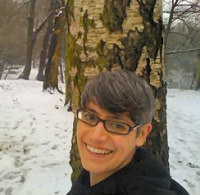I am interested in PhD students working in the areas of social theory, climate change, nonhuman relations, feminist theory, biodiversity loss and polar and Anthropogenic geographies.
My research focuses on aesthetics, social theory and environmental change.
Broad research specialisms
- Climate Change & Society: climate knowledge, narratives and practices.
- Political Aesthetics or the ‘aesthetics of existence’
- GeoPhilosophy: philosophies of nature, dynamic earth processes, time and climate.
- Animality: animal forces in human and non-human life; configurations of the human; exuberance and extinction; posthumanism.
Professional activities
- Editorial Board, Environment and Planning D (EPD)
- Editorial Board, The Geographical Journal (GJ)
- Member and author of Working Group II: Interdisciplinary, European Science Foundation (ESF) RESCUE (Researching Environmental, Societal Change on an Unstable Earth) research programme.
Research overview
My primary research interest is in the political aesthetics and biopolitics of environments within the context of climate change (past and present) and biodiversity loss.
Currently, I am working on three projects:
- Geologic Life: a prehistory of Anthropogenic Futures: The Anthropocene proposes a new geological epoch that designates humans as a geomorphic force capable of shaping earth systems on the same scale as other geomorphic forces. Yet, nowhere are the geophysical, genomic and social narratives of this new geologic subjectification been considered together in a way that interrogates this geologic capacity, not just in terms of impacts on the earth, but as a force in which the subject shares. The project considers the geologic as a defining strata of contemporary subjectivity, specifically within the context of climate change and the designation of the Anthropocene, but also more generally as a variable determinate that subtends subjectivity. Given the blurring of cultural and natural causality in anthropogenic climate change (or a renaturalising of humanity as geologic), how we think about dynamic earth forces and geologic capacities within the context of both subject formation and hominid evolution is increasingly important to geopolitics. One way into the sensibility of this longue durée of human evolution and its geologic, geographic and genomic narratives in the era of the Anthropocene is to look at the material reminders of geologic life on which narratives of the human or anthropos are mobilised: hominid fossils. This project, then, investigates what I am calling “geologic life”—a mineralogical dimension of human existence that remains currently under thought in social theory, and has direct relevance for how we conceive of our current relations to fossil fuels and climate change; materially, culturally, biologically, and temporally—through fossils.
- The Political Aesthetics of Climate Change: I am particularly interested in how we understand dynamic earth processes and environmental change through aesthetic experience, and how these experiences configure our political relations to human and non-human worlds. Part of this work concentrates on thinking about what knowledge economies exist between human non-human worlds and how ideas of animality, multispecies living and biopolitics are articulated through co-joined aesthetic experiences/experiments. Within this work, I have been interested in a range of visual artefacts, from polar bears and to ice cores, and a range of ways of seeing, practicing, and thinking politics. Theoretically, this work has sought to understand how we might configure an “aesthetics of existence” in relation to abrupt climate change, and to investigate how aesthetics constitutes a space of practice and a space of thought in environmental politics.
- Prehistoric art, animality and climate change: Thinking back to the Last Glacial Maximum and the Art of the Prehistoric, this project investigates the aesthetics of cave painting as a key practice in becoming human. Set within the context of climates past and climates future, this work investigates the role of art in human evolution (and the parallel development of theories of evolution and theories of prehistory). Specifically, it focuses on the relation of humans to non humans in the context of understanding and experiencing environmental change. Theoretically this project is informed by the work of Georges Bataille, Elizabeth Grosz, Maurice Blanchot, Jean-Luc Nancy and others. More broadly, this work also synthesises the genealogy of aesthetics that thinks aesthetical encounters as a space of experience and a space of possibility (for thinking the hitherto unthinkable). The examination of aesthetics is developed over three distinct historical epochs: prehistory; contemporary; and futures.
